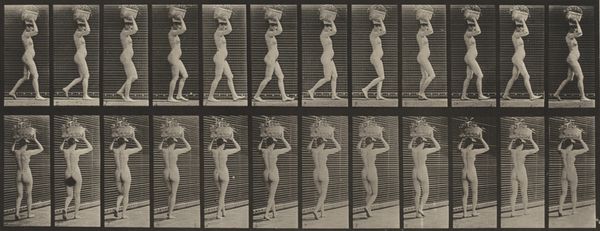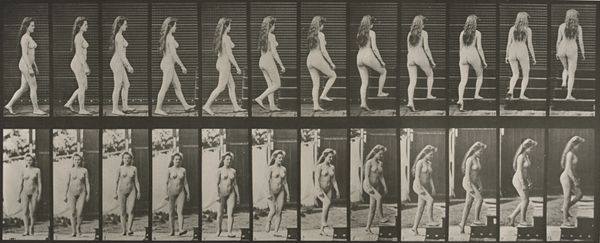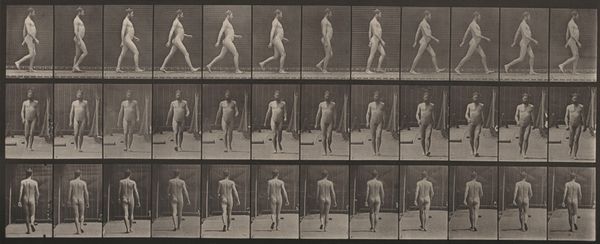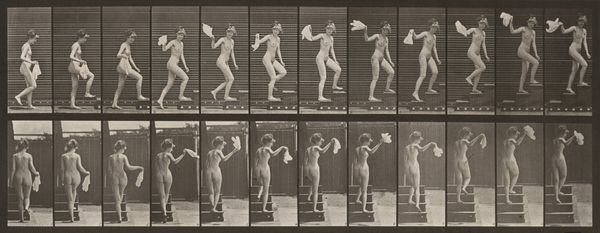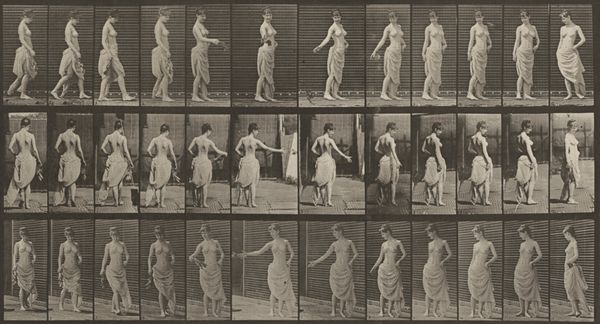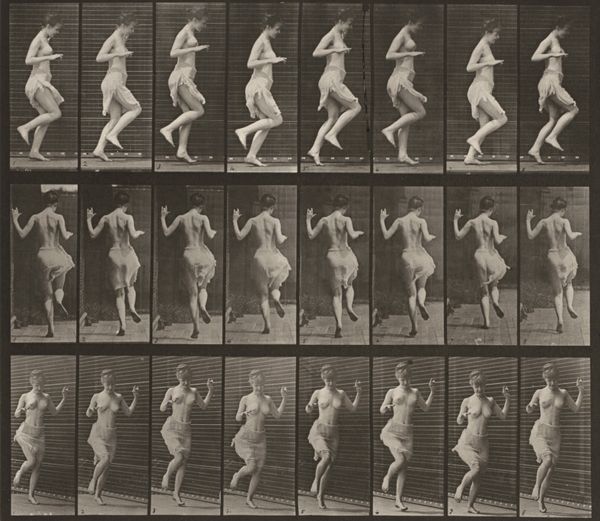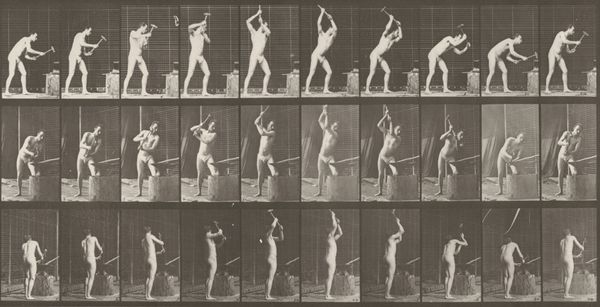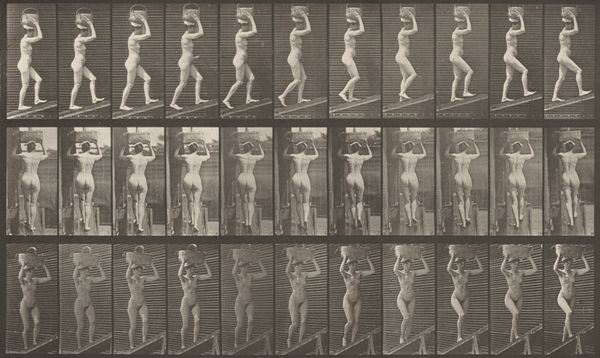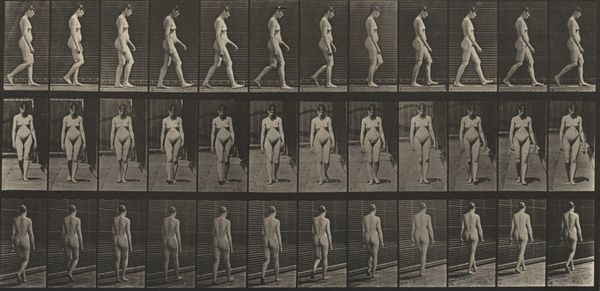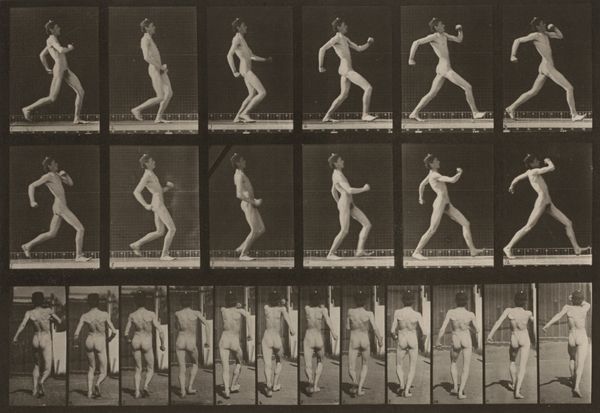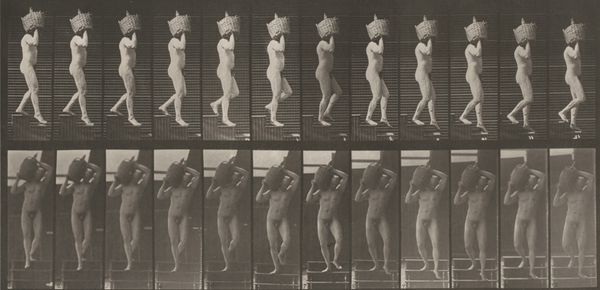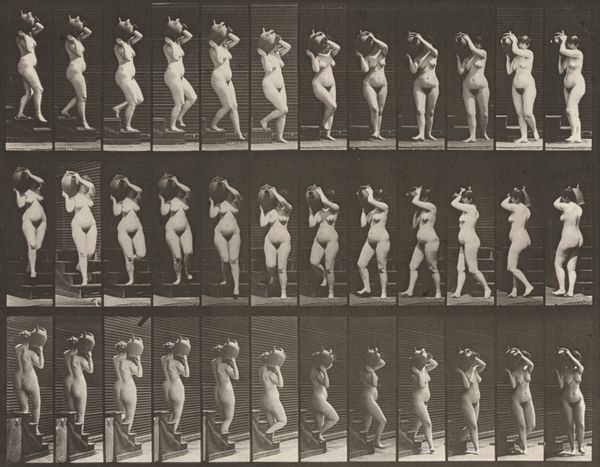
photography
#
kinetic-art
#
16_19th-century
#
figuration
#
photography
#
geometric
#
england
Dimensions: 20 × 32.3 cm (image); 34.9 × 49.9 cm (paper); 48.7 × 61.3 cm (mount)
Copyright: Public Domain
Editor: So, here we have Eadweard Muybridge's "Animal Locomotion, Plate 469" from 1887, at the Art Institute of Chicago. It’s a photographic study, showing a girl running. The thing that strikes me is how analytical it is, breaking down this natural, fluid motion into these discrete, almost scientific images. What do you see in it? Curator: Ah, Muybridge. Always fascinating! I see a bridge, if you will, between art and science, a dance between observation and imagination. For me, it evokes a feeling of early cinema, that sense of wonder at capturing movement. Look at those geometric backgrounds. They’re so clinical, so detached, yet the figure... she’s all vitality, all innocent energy. I wonder what she was thinking as she ran through this grid? Editor: It does feel like the birth of film. So, he was really trying to scientifically analyze movement, right? What impact did that have at the time? Curator: Absolutely! Remember, this was a time when our understanding of movement was still largely based on static representation, think paintings and sculptures frozen in time. Muybridge shattered that illusion. His work revealed the hidden truths of locomotion that the human eye couldn't perceive. And in terms of influence, his studies went on to inspire artists and scientists alike – influencing painting, sculpture, and even early animation. Did you notice anything unusual about the work? Editor: Well, the way he presents it is unusual! Like a grid. I would also never think to reduce an entire human form down to one movement; what about their internal thoughts or personality? Curator: Yes, I concur! That clinical presentation juxtaposed with that vitality reminds me that it requires people such as ourselves to restore their humanity back. It is a constant, interesting, never ending tension... Editor: So true. I'll never look at a running figure the same way again! Curator: And that, my dear friend, is the power of art – and science – isn’t it?
Comments
No comments
Be the first to comment and join the conversation on the ultimate creative platform.
